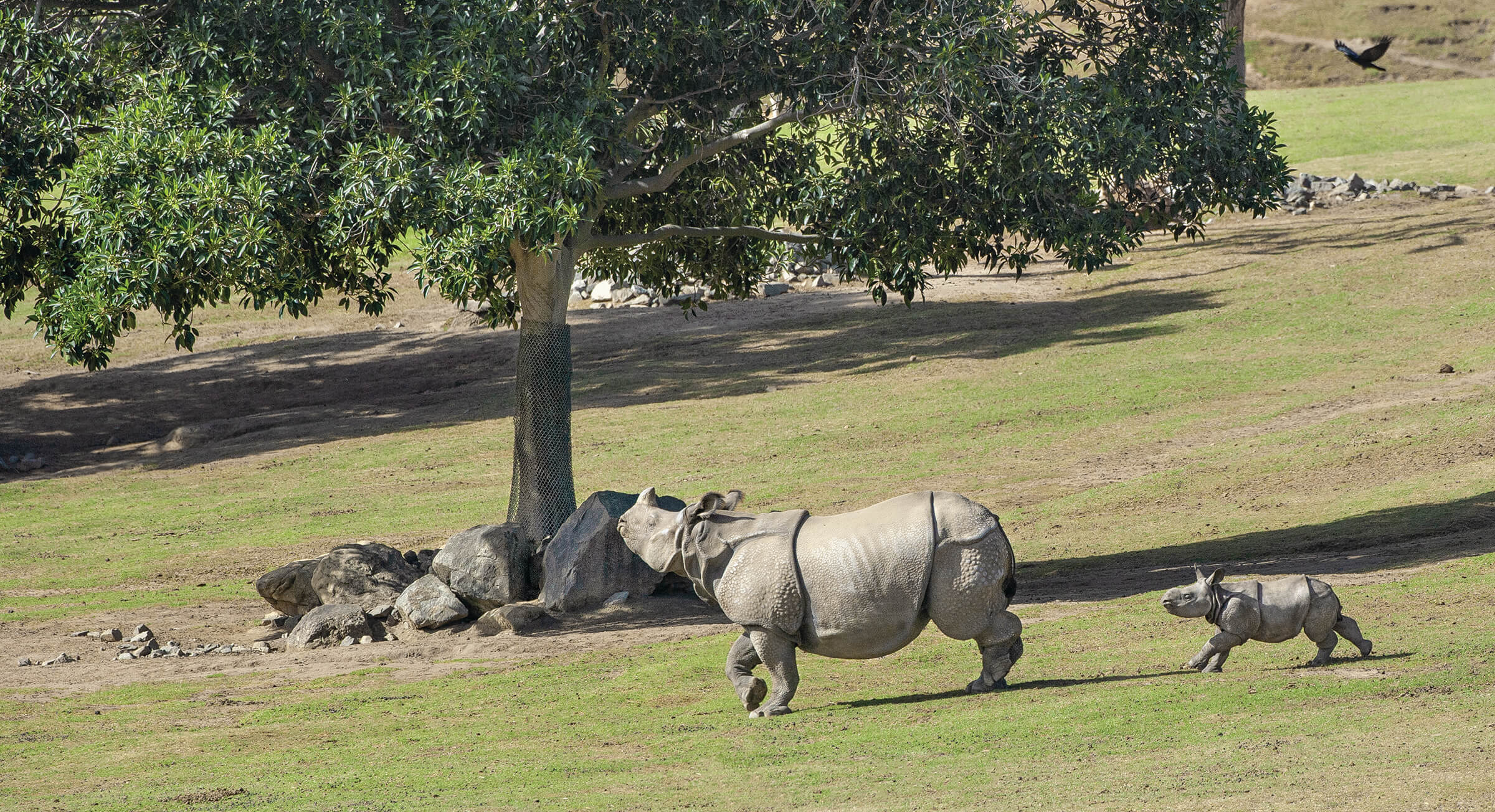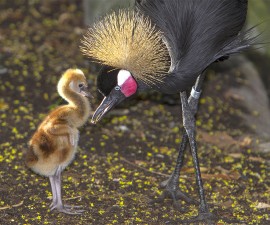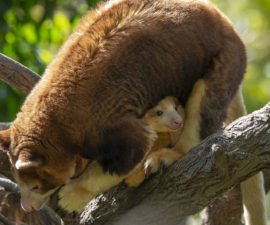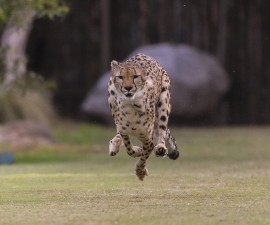BY Wendy Perkins
Photography by Ken Bohn
Visitors to the San Diego Zoo and the San Diego Zoo Safari Park are often as delighted by the plants as the animals—for good reason! The horticulture staff at both facilities works diligently to maintain and enhance our varied and vast plant collections for aesthetic and conservation purposes. They also channel their expertise to benefit the animals. One goal is to create natural-looking habitats; yet, not just any plant will do. Of course, anything planted must be safe for the animals, and the staff wants the plants not just to survive, but thrive. That is made more daunting by the attraction many animals have to the plants—as anyone trying to garden with a pet dog around knows. How do our horticulturists do it?
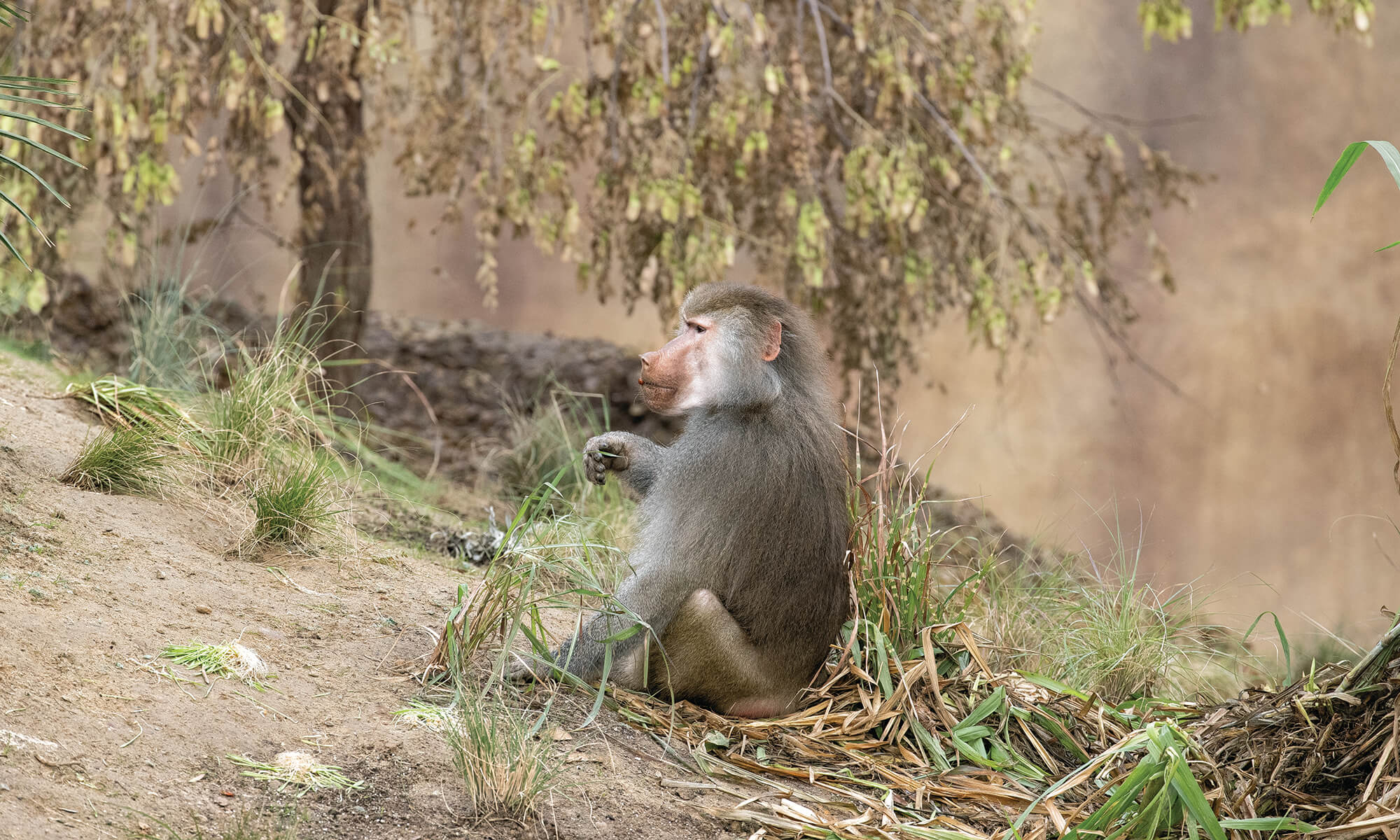
A HELPFUL HEAD START
Giving grasses time to become deeply rooted helps them survive baboons’ attempts to pluck them whole.
Live and Learn
It’s an ongoing challenge. “There’s no one good answer,” explains Mike Letzring, senior plant propagator at the Zoo. “It depends on the animals and plants in question; even down to individual species.” As an example, Mike shares that primates, with their high intelligence, curiosity, and nimble digits, can be tough on plants. When the horticulture team planted Mediterranean fan palms in the bonobo exhibit, though, they found that the apes left the tough, sharp-tipped leaves alone. So, when it came time to add plants to the hamadryas baboon and gelada habitats in Conrad Prebys Africa Rocks, they used Mediterranean fan palms. On the first day, however, they discovered that the baboons and geladas simply plucked off the prickly bits and used their hands and teeth to shred the fronds, leaving a naked stump. So much for that idea!
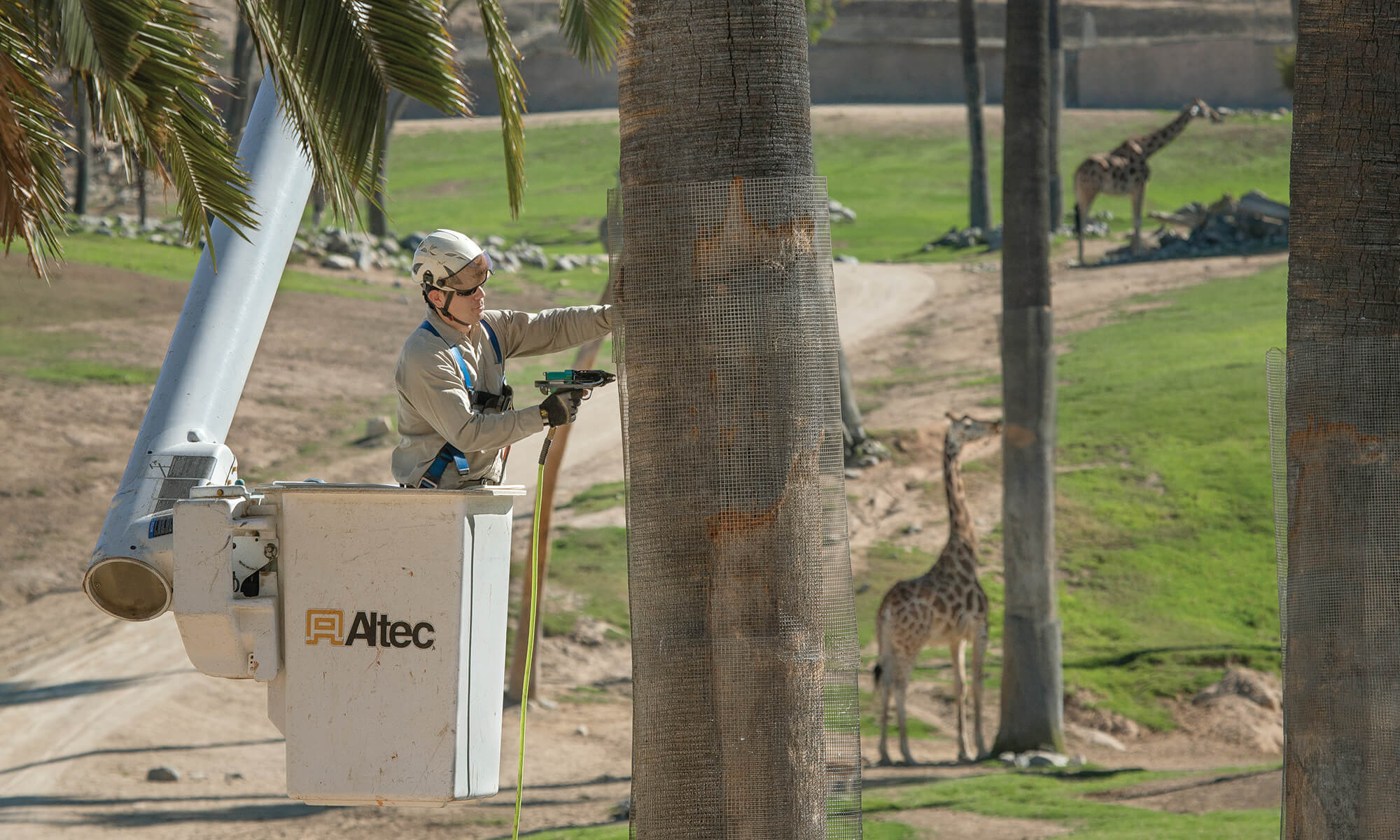
CONSTANT CARE
With more than 100 palms in the Park’s East Africa habitat alone, the arborists are kept busy protecting them from wear and tear.
Dressed for Success
At the Safari Park, caring for trees in the field habitats has its own hurdles. The trees are important for shade, but they also create a bounty for browsers. Or they could, if the Park’s horticulture team didn’t take careful steps to protect the trees, starting with physical considerations. “We look for trees that will have their lowest branches at 22 feet above the ground,” says Gail Thurston, lead horticulturist at the Park. Next, tree trunks are wrapped with a special-order wire mesh to protect the bark from rubbing rhino and antelope horns and giraffes licking and nibbling. “We originally used two-inch chain-link,” explains Gail. “But the giraffes still rasped off bark, leaving the palm trunks with a polka dot pattern!”
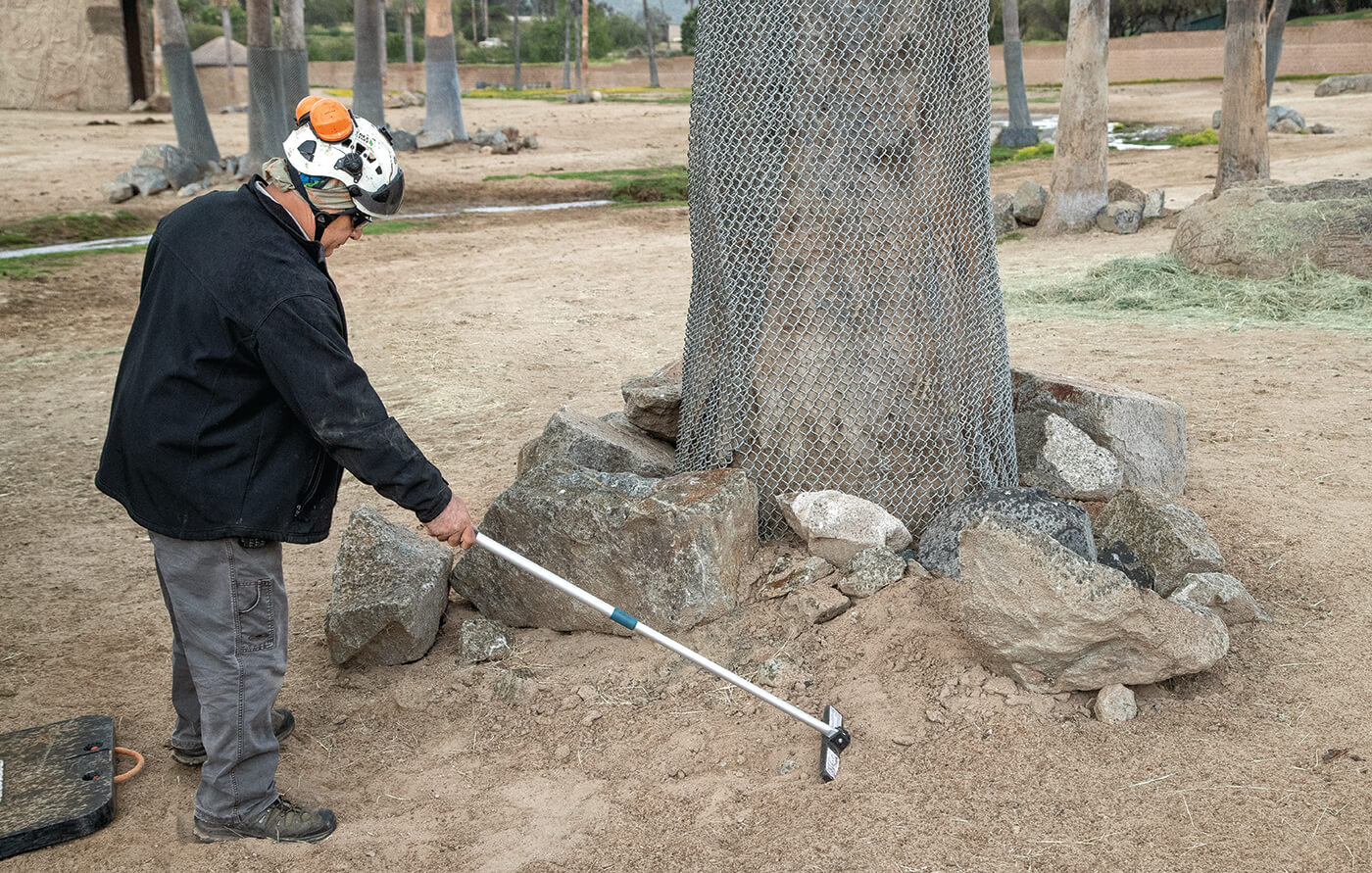
CLEAN SWEEP
After the mesh is installed, a large magnet is used to find and remove any metal pieces that hit the ground and would be harmful if a animal swallowed them.
For the palm trees, the constant attention from the mouths of animals is mostly an aesthetic problem. For hardwood trees, however, damage to the outer bark is more serious. “Palm trees draw water up through their whole trunk,” says Gail. “Hardwood trees rely on the xylem layer, protected by bark, to transport moisture. If that’s damaged, the tree is in trouble.”
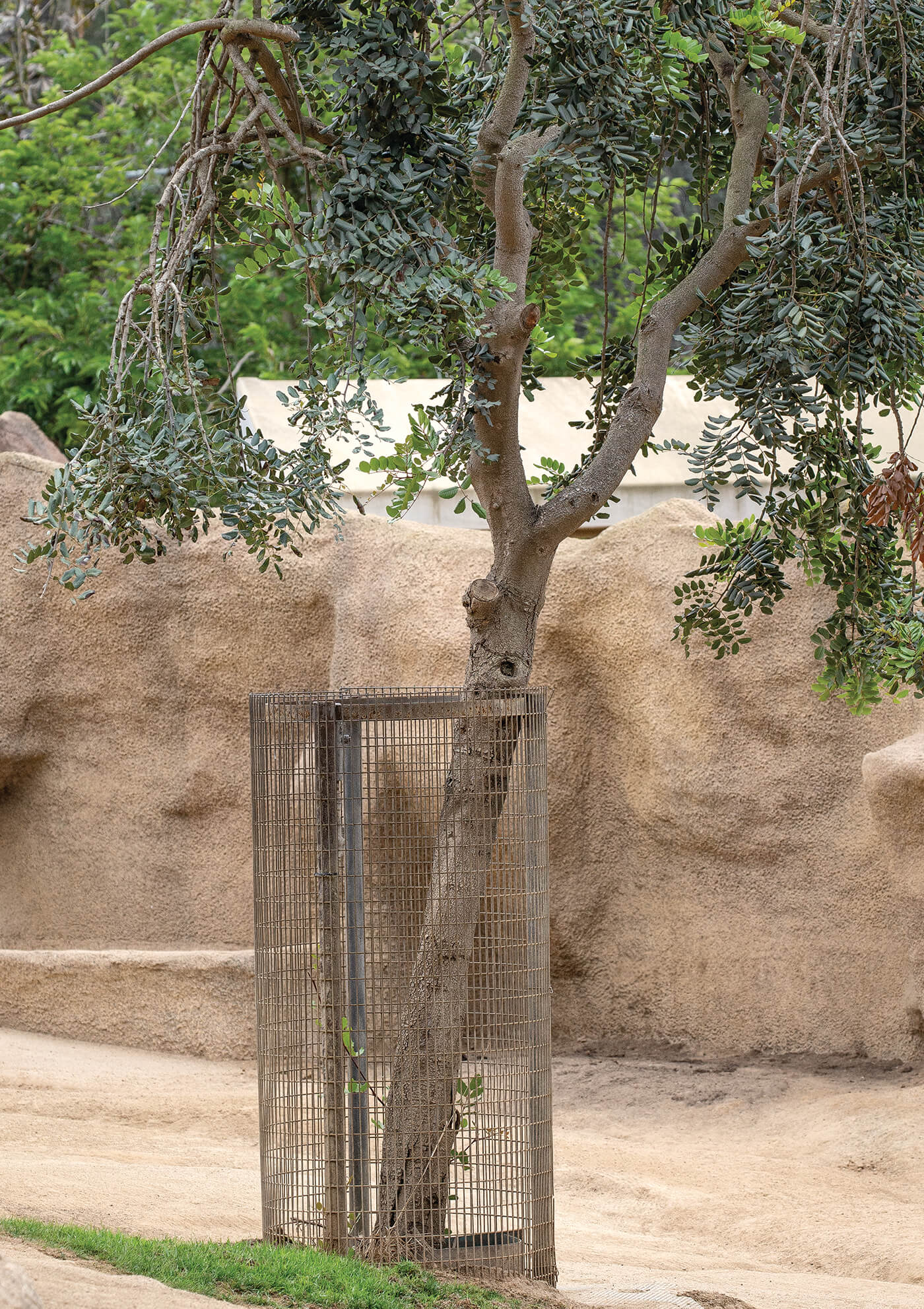
PLANNING FOR FUTURE GROWTH
Thought and understanding goes into choosing a protective barrier that also gives a hardwood tree’s trunk room to thicken.
Routing the Rooters
Trunks and branches aren’t the only vulnerable part of the trees and shrubs; the root ball needs protection in some cases, as well. One of the habitats in Africa Rocks is designed to alternate between fossas and honey badgers. The former is an arboreal carnivore that makes the most of the many branches in the space. But the horticulture team considered the honey badger’s tenacity and penchant for burrowing when planting a tree in the exhibit. Before the tree went into the ground, its root ball was wrapped in chain-link. That way, a honey badger can dig to its heart’s content, while the tree’s “heart” is safe from powerful claws.
Roots need—and get—protection from another earth-moving animal: pigs, from red river hogs to babirusas and beyond. The trees in these animals’ homes have their root balls wrapped in wire, with boulders set around the trunks as a barrier. The super rooters still express their digging desires, but not at the cost of the plants.
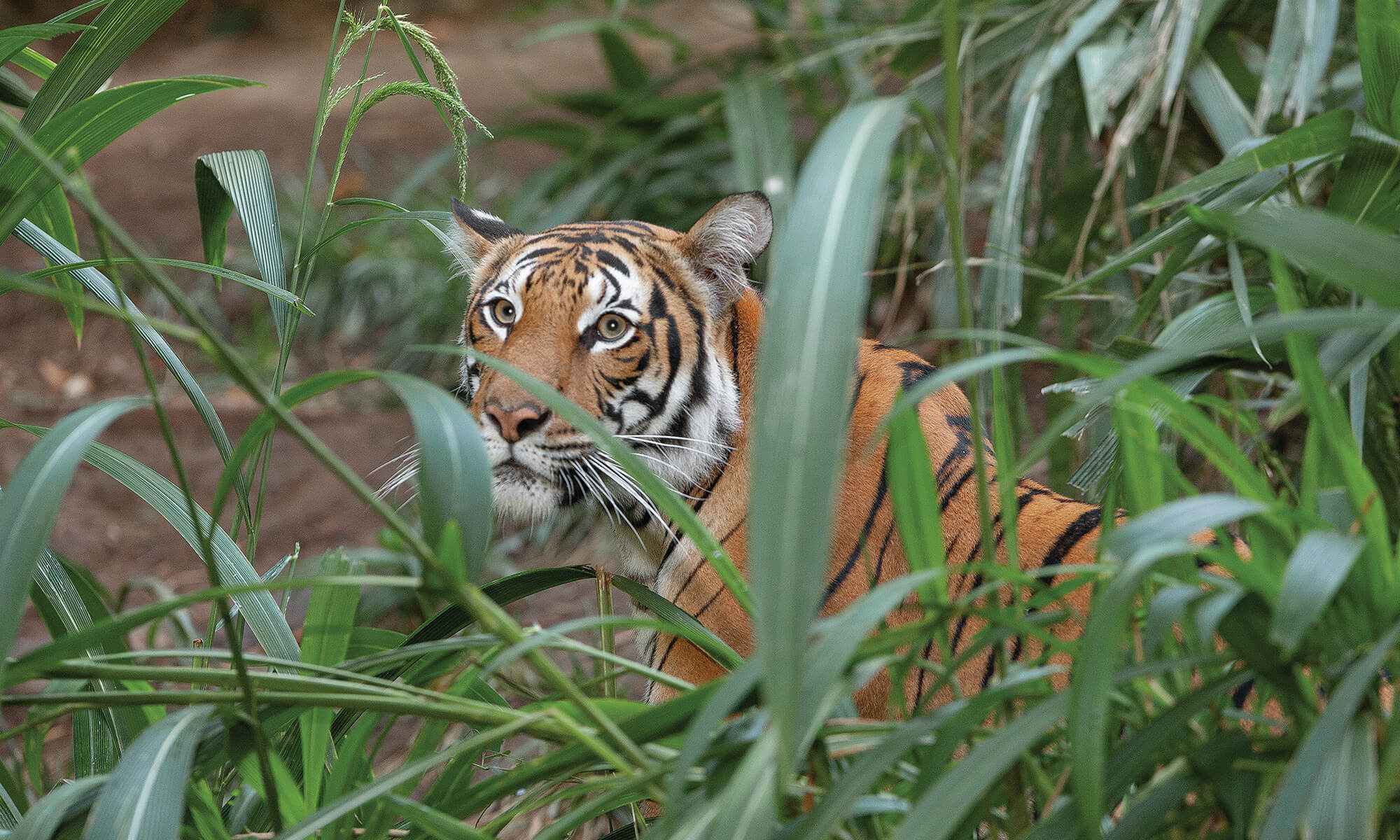
LUSH AND COMFY
Tigers may be carnivores, but they are just as tough on plants as herbivores!
Bonus Challenge
Carnivores often have their own uses for plants—cushy comfort. “Tigers seem to like to sit on everything,” says Mike—a situation many domestic cat owners are familiar with. “It’s always a challenge to find a plant that can survive being pounced on or lounged in by the cats.” So far, palm grass seems to be a good match for the tigers; it’s tough and flexible, so it generally bounces back after the cat moves to a different spot.
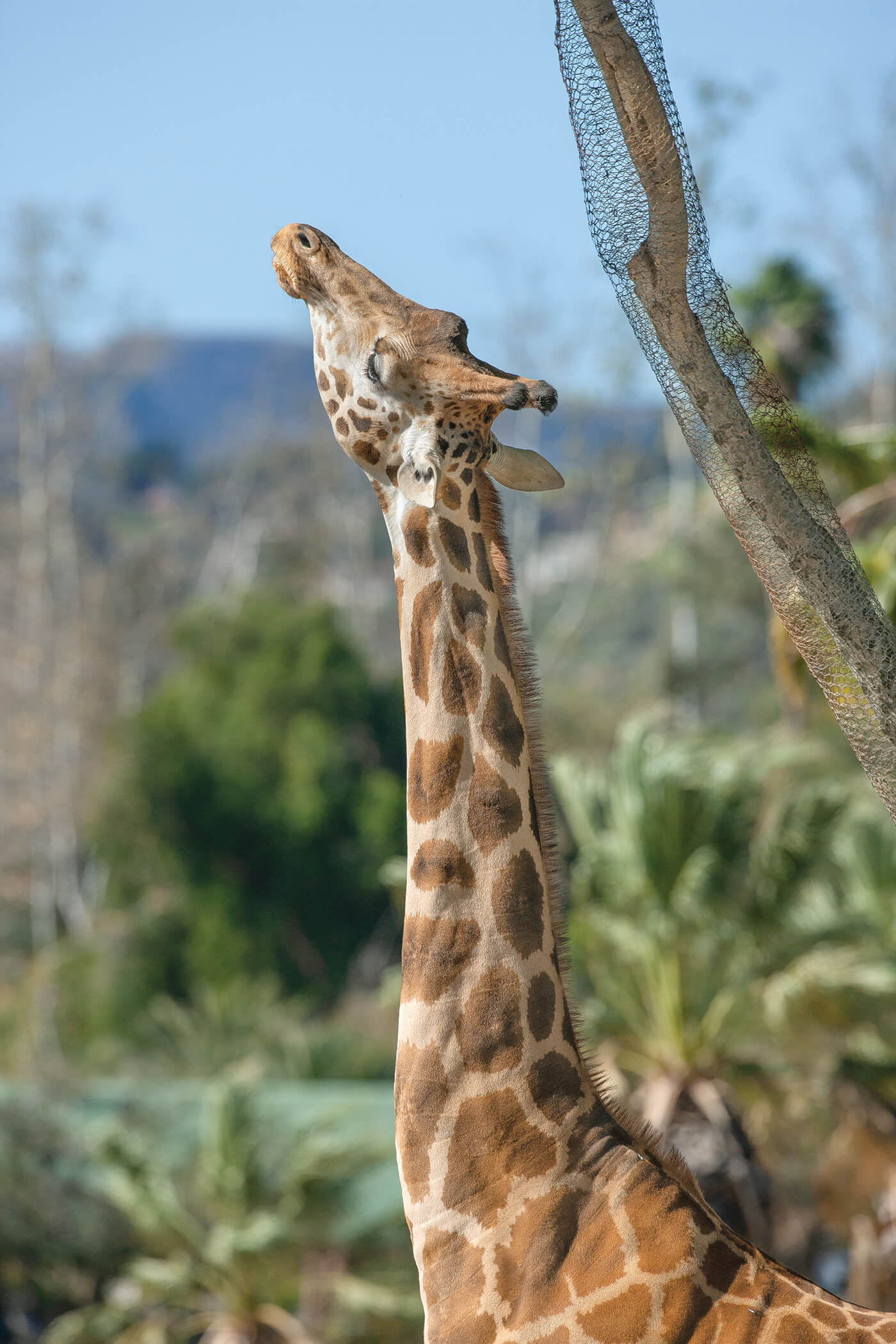
WIN-WIN
Wire mesh keeps giraffes from peeling tree bark but still provides them with a scratching post.
For all the hurdles, the horticulture teams know that their energy, sweat, and problem-solving skills add to the quality of life for the animals at the Zoo and the Safari Park. Some animals even incorporate the landscaping into their nest-building and breeding cycles, a useful and necessary “loss” of plants. Extra cover and more security for the animals is another plus the plants provide, which can also result in more natural behaviors. And that creates a richer environment and experience for both animals and visitors.

